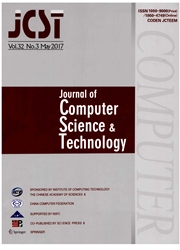

 中文摘要:
中文摘要:
The wide acceptance and data deluge in medical imaging processing require faster and more efficient systems to be built.Due to the advances in heterogeneous architectures recently,there has been a resurgence in the first research aimed at FPGA-based as well as GPGPU-based accelerator design.This paper quantitatively analyzes the workload,computational intensity and memory performance of a single-particle 3D reconstruction application,called EMAN,and parallelizes it on CUDA GPGPU architectures and decouples the memory operations from the computing flow and orchestrates the thread-data mapping to reduce the overhead of off-chip memory operations.Then it exploits the trend towards FPGA-based accelerator design,which is achieved by offloading computingintensive kernels to dedicated hardware modules.Furthermore,a customized memory subsystem is also designed to facilitate the decoupling and optimization of computing dominated data access patterns.This paper evaluates the proposed accelerator design strategies by comparing it with a parallelized program on a 4-cores CPU.The CUDA version on a GTX480 shows a speedup of about 6 times.The performance of the stream architecture implemented on a Xilinx Virtex LX330 FPGA is justified by the reported speedup of 2.54 times.Meanwhile,measured in terms of power efficiency,the FPGA-based accelerator outperforms a 4-cores CPU and a GTX480 by 7.3 times and 3.4 times,respectively.
 英文摘要:
英文摘要:
The wide acceptance and data deluge in medical imaging processing require faster and more efficient systems to be built.Due to the advances in heterogeneous architectures recently,there has been a resurgence in the first research aimed at FPGA-based as well as GPGPU-based accelerator design.This paper quantitatively analyzes the workload,computational intensity and memory performance of a single-particle 3D reconstruction application,called EMAN,and parallelizes it on CU-DA GPGPU architectures and decouples the memory operations from the computing flow and orches-trates the thread-data mapping to reduce the overhead of off-chip memory operations.Then it exploits the trend towards FPGA-based accelerator design,which is achieved by offloading computingintensive kernels to dedicated hardware modules.Furthermore,a customized memory subsystem is also designed to facilitate the decoupling and optimization of computing dominated data access patterns.This paper evaluates the proposed accelerator design strategies by comparing it with a parallelized program on a 4-cores CPU.The CUDA version on a GTX480 shows a speedup of about 6 times.The performance of the stream architecture implemented on a Xilinx Virtex LX330 FPGA is justified by the reported speedup of 2.54 times.Meanwhile,measured in terms of power efficiency,the FPGA-based accelerator outperforms a 4-cores CPU and a GTX480 by 7.3 times and 3.4 times,respectively.
 同期刊论文项目
同期刊论文项目
 同项目期刊论文
同项目期刊论文
 期刊信息
期刊信息
